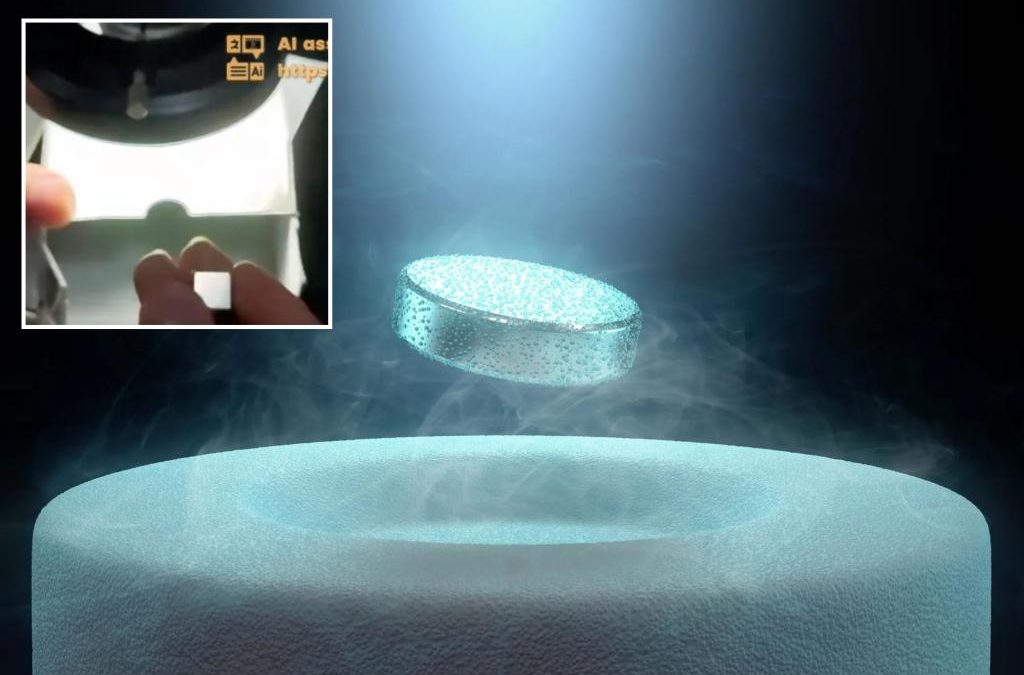Imagine riding a levitating train at speeds of 14,000 miles per hour — cutting the trip from New York to Los Angeles to just 20 minutes.
A team of South Korean researchers say the science fiction fantasy is closer to reality than ever before with what they claim is a revolutionary breakthrough in superconductors.
The researchers published their findings July 22 — immediately sending the close-knit scientific community into a viral lather.
“We believe that our new development will be a brand-new historical event that opens a new era for humankind,” the researchers wrote.
Superconductivity requires extremely low temperatures, making it costly to replicate on a mass commercial scale.
Their paper, which was not peer-reviewed, claimed they were able to synthesize the world’s first superconductor able to conduct electricity at room temperature and ambient pressure from a lead-based material known as LK-99.
“If it wasn’t clear why this is a big deal, if successful LK-99 would be a watershed moment for humanity easily on-par with the invention of the transistor,” engineer Andrew Cote wrote on his X profile.
However, skeptics quickly poured cold water over their claims, while others raced to duplicate their findings — with little success.
“I take [the announcement] with the proverbial grain of salt, though this particular grain seems closer to the size of a rock,” Jens Koch, a physics professor at Northwestern University, told The Daily Beast.
“This is an area of research where breakthrough claims have been made in the past and then had to be retracted because they did not hold up under scrutiny.”
Koch added: “Some of my colleagues have already voiced concerns about the data presented by the South Korean group.”
“I will believe it if or when I see verification.”
The remote possibility LK-99 could provide a giant leap for mankind spiked the stock price of firms conducting research into superconductors. American Superconductor Corp. saw its shares increase by nearly 130% in the days after the South Koreans published their paper.
A superconductor is able to conduct an electric current with virtually zero resistance — thus allowing electricity to flow through it without any energy loss.

According to Cote, achieving superconductivity at room temperatures would lead to a revolution in “generation, transforming and distribution of energy.”
“Room-temperature ambient-pressure superconductors would produce extremely strong magnetic fields with very high efficiency,” making energy cheap and more readily available while reducing carbon footprint, according to Cote.
Stable, room-temperature superconductors could be used to create those supersonic “maglev” trains, allow cargo ships to reduce fuel consumption and emissions, and improve the performance of aircraft and other industrial vehicles.

Microprocessors would be able to operate at extremely high speeds, thus improving data analysis, complex simulations and artificial intelligence.
However, don’t book those train tickets just yet.
Michael Norman, a physicist at Argonne National Laboratory, told Science magazine that the Korean researchers “come off as real amateurs.”
“They don’t know much about superconductivity and the way they’ve presented some of the data is fishy,” he said.
Source




